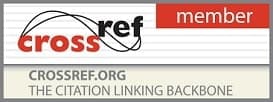2021, Vol. 4, Issue 1, Part B
Factors affecting the severity of hemolytic disease of the new-born due to ABO incompatibility
Author(s)
Komal Mendapara and Arti Makwana
Komal Mendapara and Arti Makwana
Abstract
Background and Aim: ABO incompatibility is one of the most common cause of hemolytic disease of fetus and new born. Better understanding of the factors affecting its severity helps to optimise care. The objective of this study was to investigate the factors affecting the severity of HDN due ABO incompatibility in new-borns.
Background and Aim: ABO incompatibility is one of the most common cause of hemolytic disease of fetus and new born. Better understanding of the factors affecting its severity helps to optimise care. The objective of this study was to investigate the factors affecting the severity of HDN due ABO incompatibility in new-borns.
Methods: This study was a prospective observational study conducted in the NICU, department of Pediatrics, P.D.U Government Medical College and Hospital, Rajkot. The study was conducted from January 2019 to June 2019; 50 new-borns with ABO incompatibility i.e., having blood group A or B born to mothers with blood group O, presenting with jaundice and or anemia were enrolled in the study. Various maternal and neonatal factors and their possible association in affecting the severity of HDN were studied.
Results: In our study, 27 neonates (54%) were male and 23 neonates (46%) were female. Percentage of O-A and O-B incompatible neonates were 26 (52%) and 24 (48%) respectively. The various maternal and neonatal factors had no significant association in affecting the severity of the disease. The mean age of presentation was 3.74 ± 2.34 days. Jaundice was detected in the first 24 hours of life in 6% neonates. The mean initial indirect bilirubin was 19.77 ± 2.50, and initial hemoglobin was 14.41 ± 2.07. Ten neonates (20%) had anemia. Total of 15 neonates (30%) had evidence of hemolysis in the form of spherocytosis. Direct Coombs Test was positive in one case. The mean duration of phototherapy was 54.62 ± 5.79 hours. Three neonates (6%) required exchange transfusion and 4 neonates (8%) received IVIG. The mean duration of stay was 4.18 ± 1.04 days.
Conclusion: Although none of the factors had a significant association in affecting the severity of HDN due to ABO incompatibility, we should remember that ABO incompatibility is not always a benign condition and should be considered even in those with a negative DCT. Early identification of high-risk neonates with ABO incompatibility and prompt diagnosis and treatment can reduce morbidity and mortality.
Pages: 79-82 | Views: 1363 | Downloads: 684

How to cite this article:
Komal Mendapara, Arti Makwana. Factors affecting the severity of hemolytic disease of the new-born due to ABO incompatibility. Int J Paediatrics Geriatrics 2021;4(1):79-82. DOI: 10.33545/26643685.2021.v4.i1b.132






